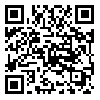BibTeX | RIS | EndNote | Medlars | ProCite | Reference Manager | RefWorks
Send citation to:
URL: http://anatomyjournal.ir/article-1-173-en.html

 , Reza Vazirinejad2
, Reza Vazirinejad2 
 , Khalil Komlakh3
, Khalil Komlakh3 
 , Ahmad Shabanizadeh4
, Ahmad Shabanizadeh4 
 , Zahra Taghipour4
, Zahra Taghipour4 
 , Hamid Reza Jafari-Naveh4
, Hamid Reza Jafari-Naveh4 
 , Akram Mollahoseini4
, Akram Mollahoseini4 
 , Mahdi Shareiati Kohbanani1
, Mahdi Shareiati Kohbanani1 

2- Department of Social Medicine and Social Determinants of Health Research Center, Rafsanjan University of Medical Sciences, Rafsanjan, Iran.
3- Department of Neurosurgery, School of Medicine, Rafsanjan University of Medical Sciences, Rafsanjan, Iran.
4- Department of Anatomy, School of Medicine, Rafsanjan University of Medical Sciences, Rafsanjan, Iran.
Introduction: We compared the effect of the teaching aids and review sessions on learning anatomy subjects by the medical students of Rafsanjan University of Medical Sciences.
Methods: In this study, during each semester, practical anatomy courses were presented by using different teaching aids such as, cadaver, bones, and training videos to the students. For all studied groups, at the end of each semester and a few days before the final exam, the regular review sessions were held by course lecturers. Then, student’s viewpoints about the effect of both teaching aids and review sessions on their learning process were investigated, using the study checklist. Finally, the mean final scores of students who participated in the review session were compared with those who did not.
Results: The mean scores of anatomy practice exam (range 1-20) of students who did not participate in review sessions were significantly lower than the student who did participate in these sessions. Among the medical and dental students, a significant difference was reported with regard to the effectiveness of teaching aids and review sessions on learning process. Viewpoint of senior students in comparison to junior students were more positive about practical courses and review sessions. Overall, students’ viewpoints about the effect of both teaching aids and review sessions on their learning process were positive and there was no significant difference between them with regard to their gender or field of study. However, medical and dental students believed that using teaching aids such as bones and models was very effective in their learning process of head and neck course. These opinions were significantly different between students of these two courses compare to students in the other courses (for models: P=0.022, for bones: P=0.007).
Conclusion: Practical anatomy and review sessions play an important role in the learning process of different subjects. Therefore, we suggest that practical courses and review sessions be held with greater emphasis and for a longer time.
Received: 2015/11/25 | Accepted: 2016/01/1 | Published: 2016/07/1
| Rights and permissions | |
 |
This work is licensed under a Creative Commons Attribution-NonCommercial 4.0 International License. |

